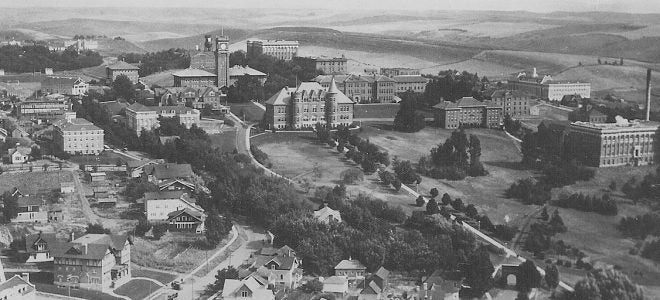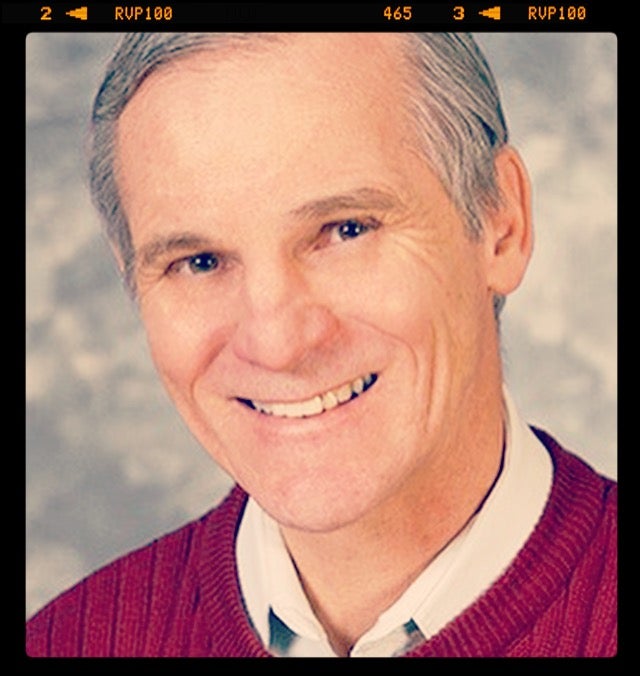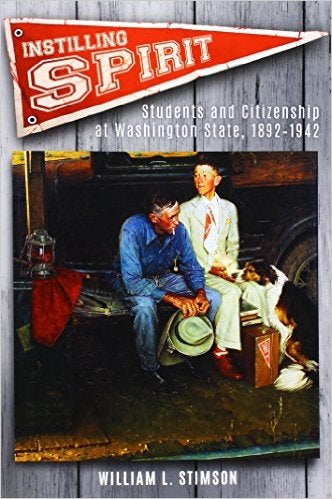

William Stimson is a professor of Journalism at Eastern Washington University. He holds an M.A. in history and Ph.D. in American History from Washington State University.
A new book, Instilling Spirit: Students and Citizenship at Washington State, 1892-1942, by William Stimson, describes how the college campus of the early 20th century taught citizen participation. Below is an excerpt from the book. — Eds.
How the twentieth century college campus trained citizens
President Ernest O. Holland of Washington State College toured Europe in 1923 and 1924 and came away impressed with how delicate democracy was. Few nations there mastered democratic politics, including the French, who had had a popular revolution about the same time as the United States did, but had never quite settled into popular government. They had the form but not the spirit of a cooperative republic.
So how did Americans do it? As a matter of fact it was a French scholar who first explained it to Europeans. In the 1830s, Alexis de Tocqueville spent nine months in the United States and produced a classic book called Democracy In America. His conclusion was that Americans learned democracy by practicing it in small ways. They might use parliamentary rules to organize talks around their dinner tables; they engaged in political debates in street markets; little boys on the playground were apt to resolve a dispute by appointing a judge and jury on the spot. Consequently, when serious matters arose, Americans knew how to respond democratically.
That was the tradition in which campus politics got its start. Prior to World War II, nearly all college presidents encouraged campus political activity as a training ground for democracy. The tradition faded in the 1960s (when national politics took over the campus) and since then political training has been largely restricted to the classroom. That has brought criticism that classroom discussion of politics is largely analytical. It sets out to find why governments fail, and discussions of failure do not encourage involvement in the political process.

William L. Stimson
Washington State University Press (2015)
Critics also claim that classroom study denatures politics by removing the emotion. University of Chicago psychologist Mihaly Csikszentmihaly pointed out that modern university learning “is generally mediated by abstract information: no appreciable risk is involved, no direct experience of effects is possible, except through a failing grade.” A British professor, Frank Musgrove, had a similar criticism. He said university study rewarded only “sustained application to tasks which involve words, ideas and abstractions,” and ignored “the skills of human relationship: … quiet unruffled confidence in human crisis; an outgoing and reassuring approach to colleagues, subordinates and clients; tact and capacity to tolerate uncertain and ambiguous human situations; concern without hypersensitivity; an interest and concern for actual concrete individuals, instead of ideas about individuals and formulae which embrace an abstracted aspect of a faceless multitude.”
On the pre-World War II campus, campaigns were not divorced from emotions. They were full of rousing speeches and intense person-to-person persuasion. Students cared about student elections because, though the outcomes were not very important, the contests engaged their egos and competitive spirits.
The campus solved an even deeper problem with civic education than how to perform in it. That is, why to perform in it. It is time-consuming work and many people opt out if they can, as Harvard political scientist Robert Putman proved with his elaborate studies of falling civic involvement over the last century. (Gathered in his book Bowling Alone). Political scientist Adrian Oldfield maintained that the only remedy to civic lassitude would be would be a rigorous standard of citizenship he calls “civic republicanism.” Under it, citizenship would become virtually a duty, like taxes and military service. That contrasts with the prevailing standard of citizenship, what Oldfield calls the “communitarian” view. Communitarians acknowledge citizenship is necessary, “but they are extremely reluctant to abandon what they see as the central importance of a rights-based account of the individual. Any attempt to provide such an individual with motivation to engage in civic duties is held to undermine that individual’s autonomy.” This presents a curious paradox: people feel being fully invested in democracy means they are protected from having to be fully invested in democracy. This “free-rider” paradox has stumped theorists since Jean Jacques Rousseau, who proposed that citizenship be presented as religion so people would feel obligated to attend services. That was the best he could do.
The problem did not, however, stump members of the Washington State College Letterman’s Club. New freshmen usually arrived at the college with the “communitarian” notion that they would make up their mind if they wanted to join the student body in its pursuit of “spirit.” Then they discovered that the Lettermen, who carried wooden paddles, were not communitarians. As far as Lettermen were concerned, participation in campus activities was not voluntary. The campus was a boot camp for “spirit” and Lettermen were the drill sergeants. On the day of a big game, they sometimes went through the dormitories banging on doors to see if there were people who had not taken their place in the stands. If they found such a person, they would engage them in a quick conversation about the difference between civic republicanism and communitarian points of view, although using other terms. This was how a student’s political education began.
From there on the whole campus preached “participation” until for most students it became an unquestioned value. From the president on down, everyone urged students to get involved with something. Being in the school orchestra or on the debate team was just as good a service as being in the football backfield. But it was important to show your interest by serving in some capacity. Every living group trained freshmen to the idea of joining the various types of organizations on campus. These affiliations behind one’s name in the yearbook were like military decorations. This is surely one of the reasons Robert Putnam designated the pre-World War II generation “the long civic generation.” No one had to explain to them the importance of taking part.